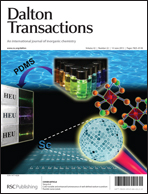The modification of photonic crystals (PCs) on photoluminescence of rare earth (RE) ions has attracted considerable interest, however, the modification of PCs on energy transfer (ET) processes of two separate RE centers has not been investigated yet. In this paper, three-dimensional Ce3+, Tb3+-codoped LaPO4 inverse opal PCs (IOPCs) were fabricated by the PMMA colloidal template method. The modification of the photonic stop band (PSB) on emission spectra and the dynamics of the 5d–4f transition of Ce3+ and the 4f–4f transition of Tb3+ ions were systematically studied. It is interesting to observe that the spontaneous decay rates (SDR) of 5D4–7F5 in the IOPCs were suppressed as highly as 173% in contrast to the reference ground powder samples (REF) due to the modification of the effective refractive index (neff). The energy transfer (ET) rate of Ce3+ to Tb3+ did not change in the IOPCs, however, the energy migration rate among Tb3+ ions was largely restrained. It is also significant to observe that, in the IOPCs, the temperature quenching and radiation trapping of photoluminescence were greatly suppressed due to the periodic empty cavity structure of IOPCs, which is significant for high-power light sources and laser devices.

You have access to this article
 Please wait while we load your content...
Something went wrong. Try again?
Please wait while we load your content...
Something went wrong. Try again?


 Please wait while we load your content...
Please wait while we load your content...